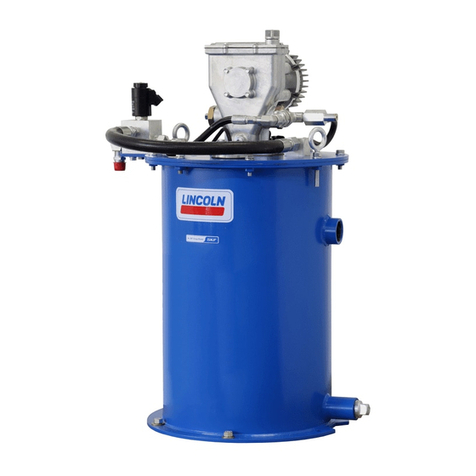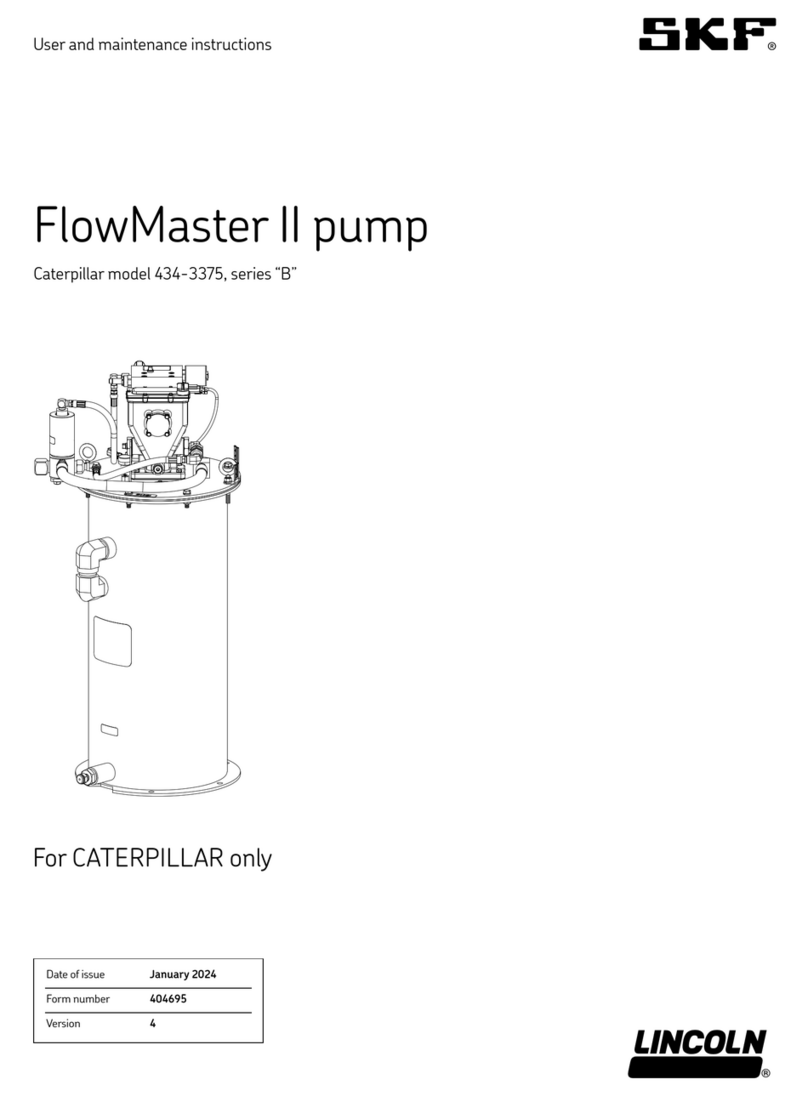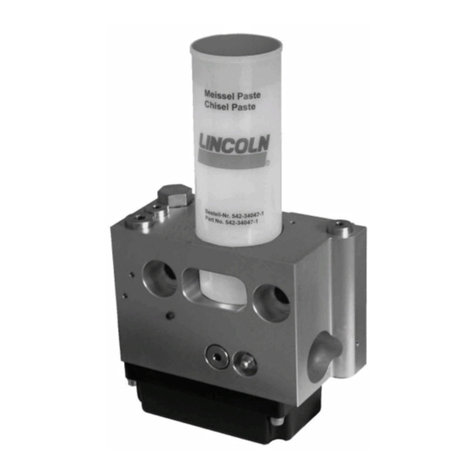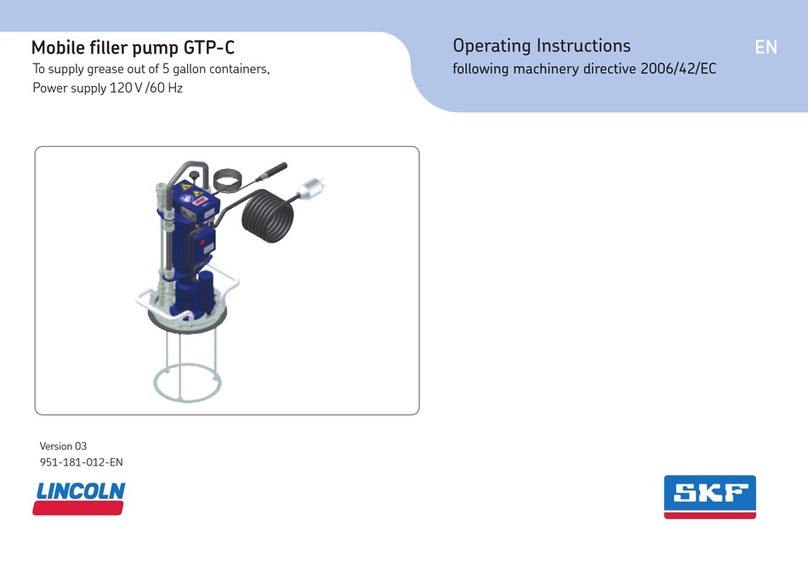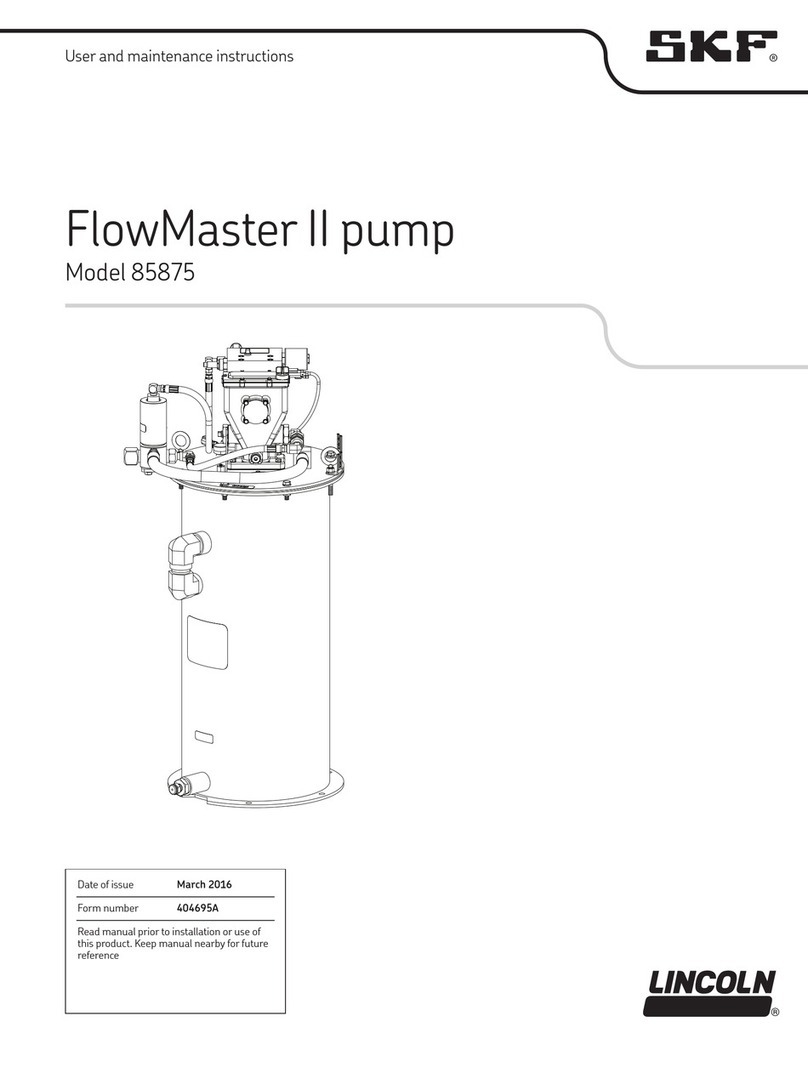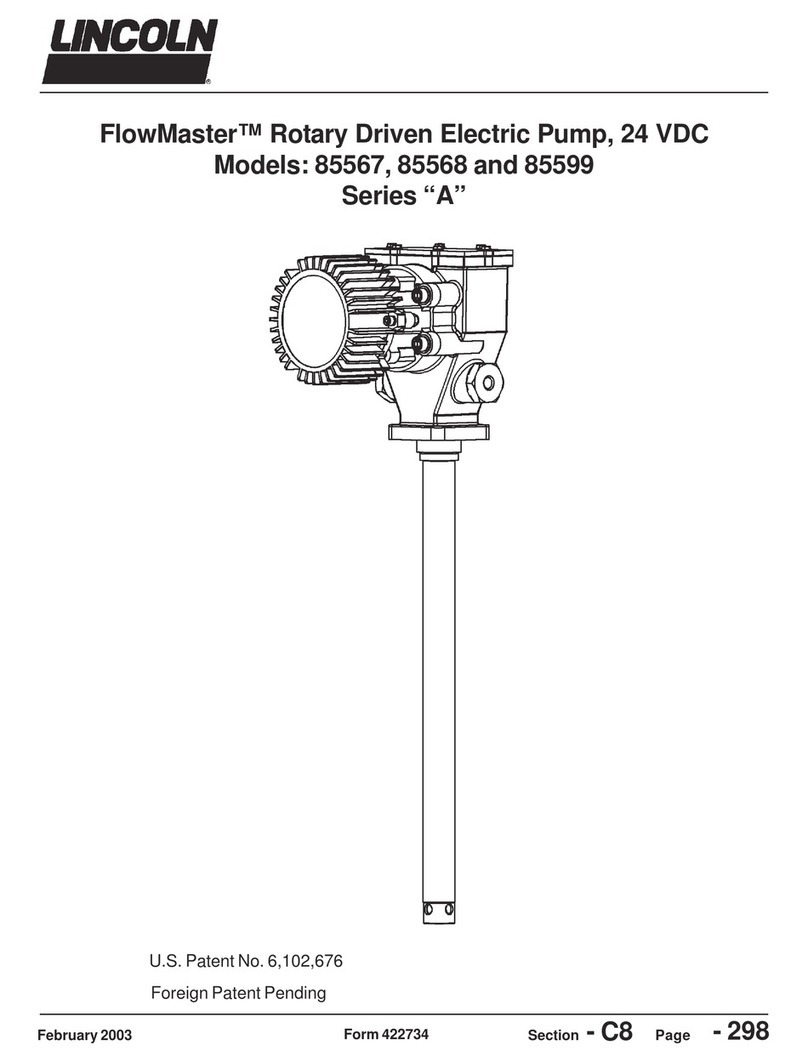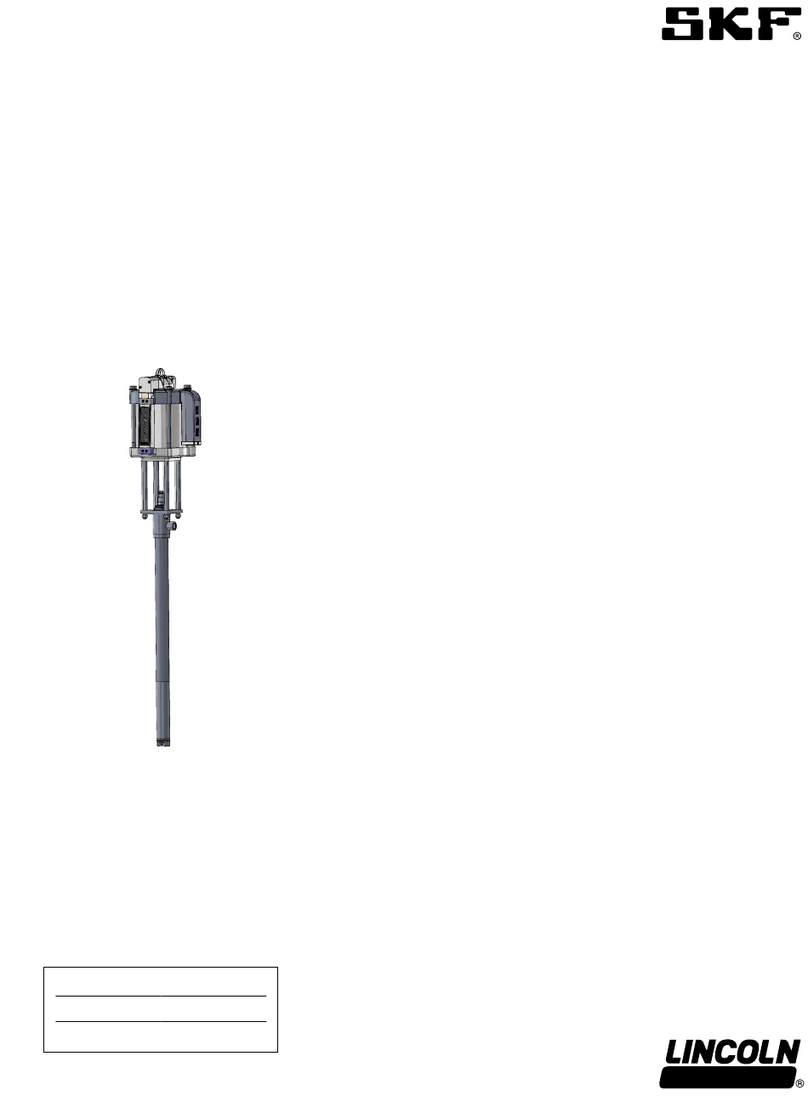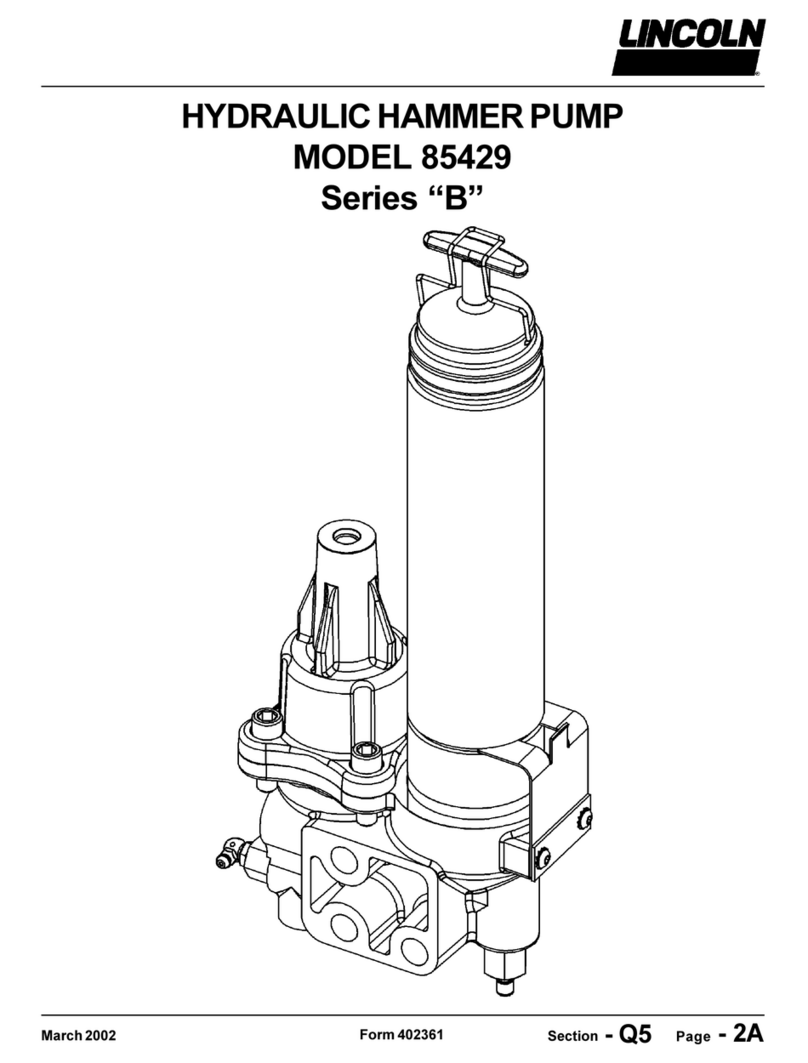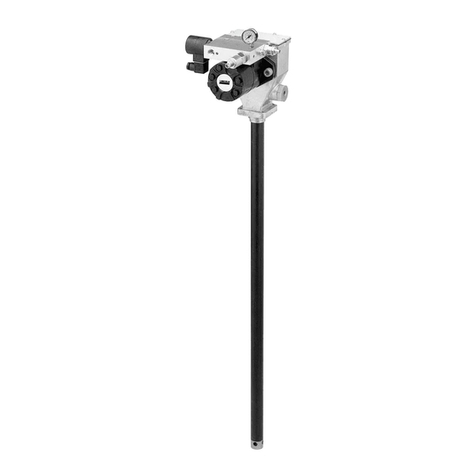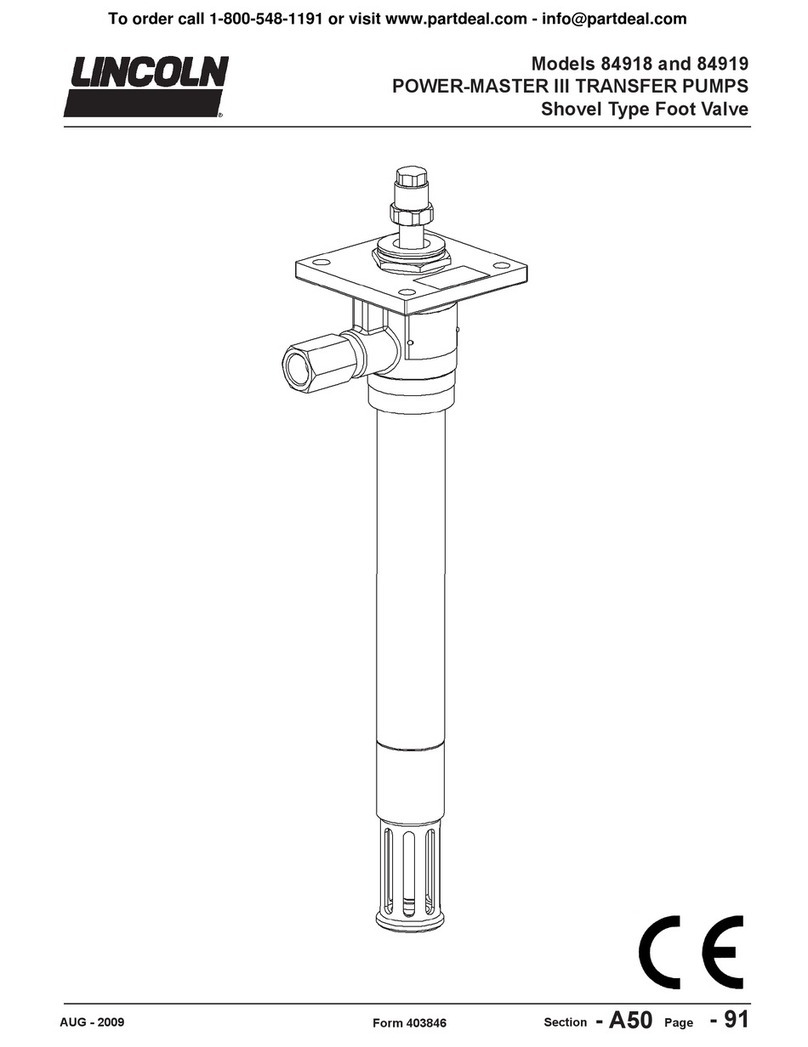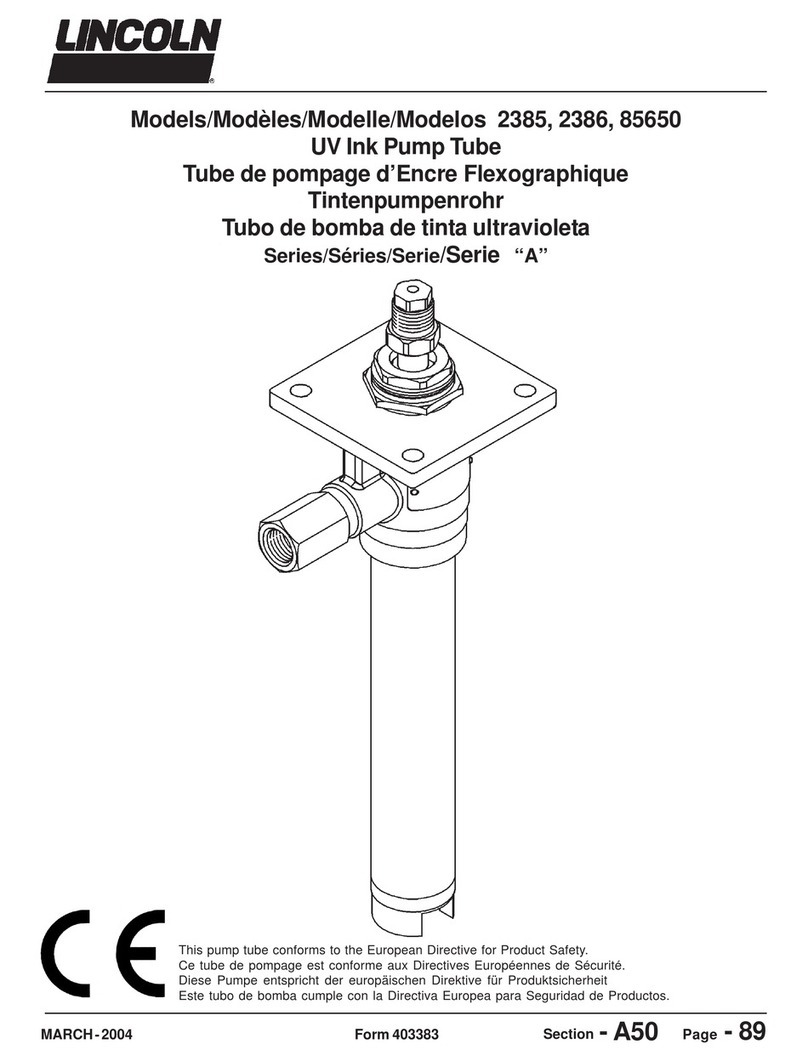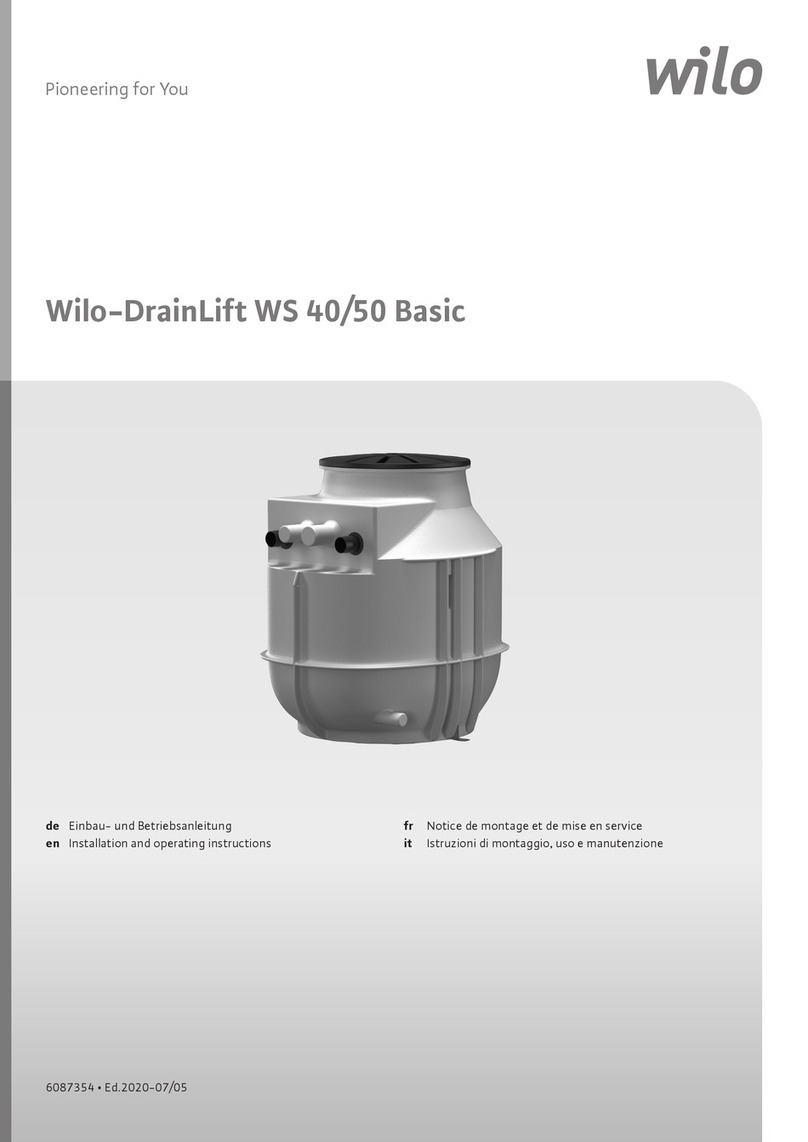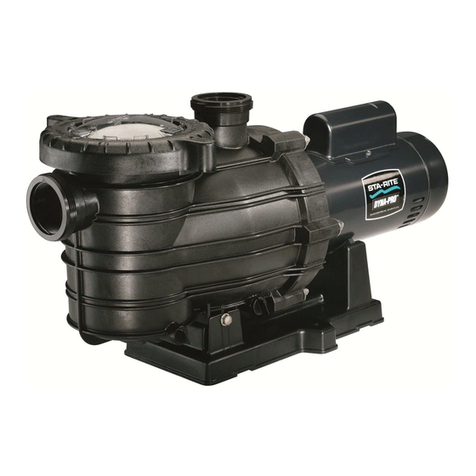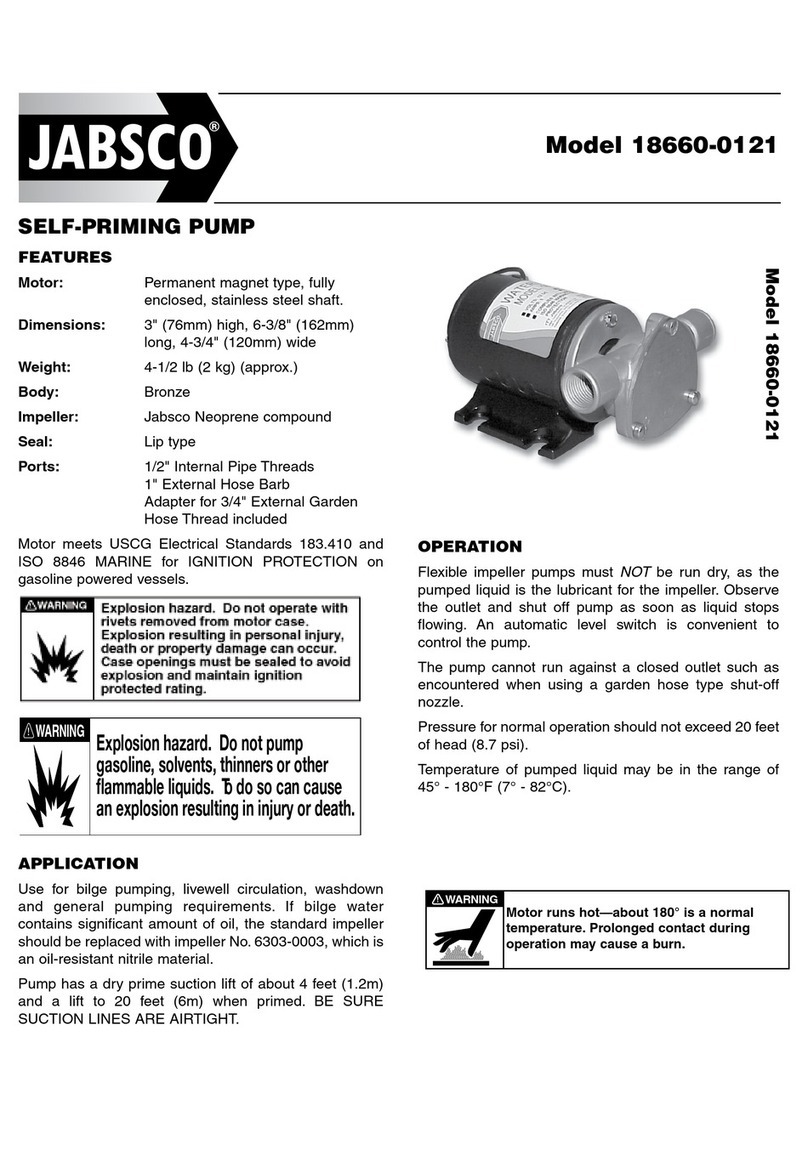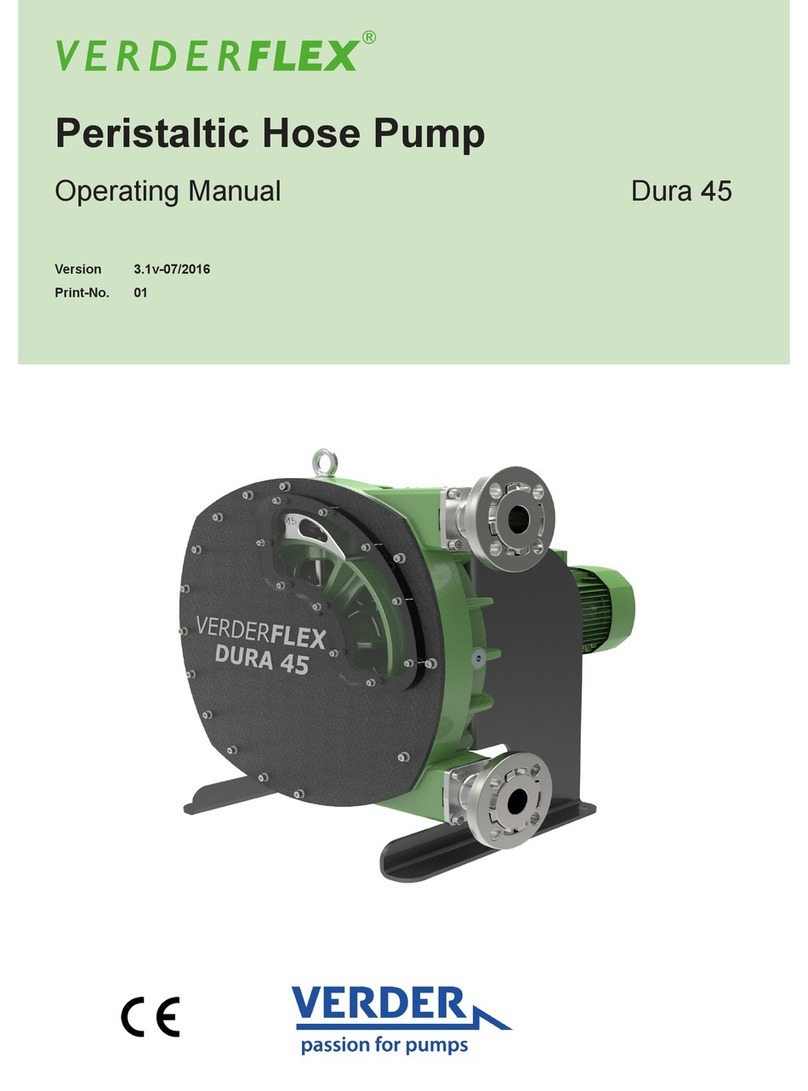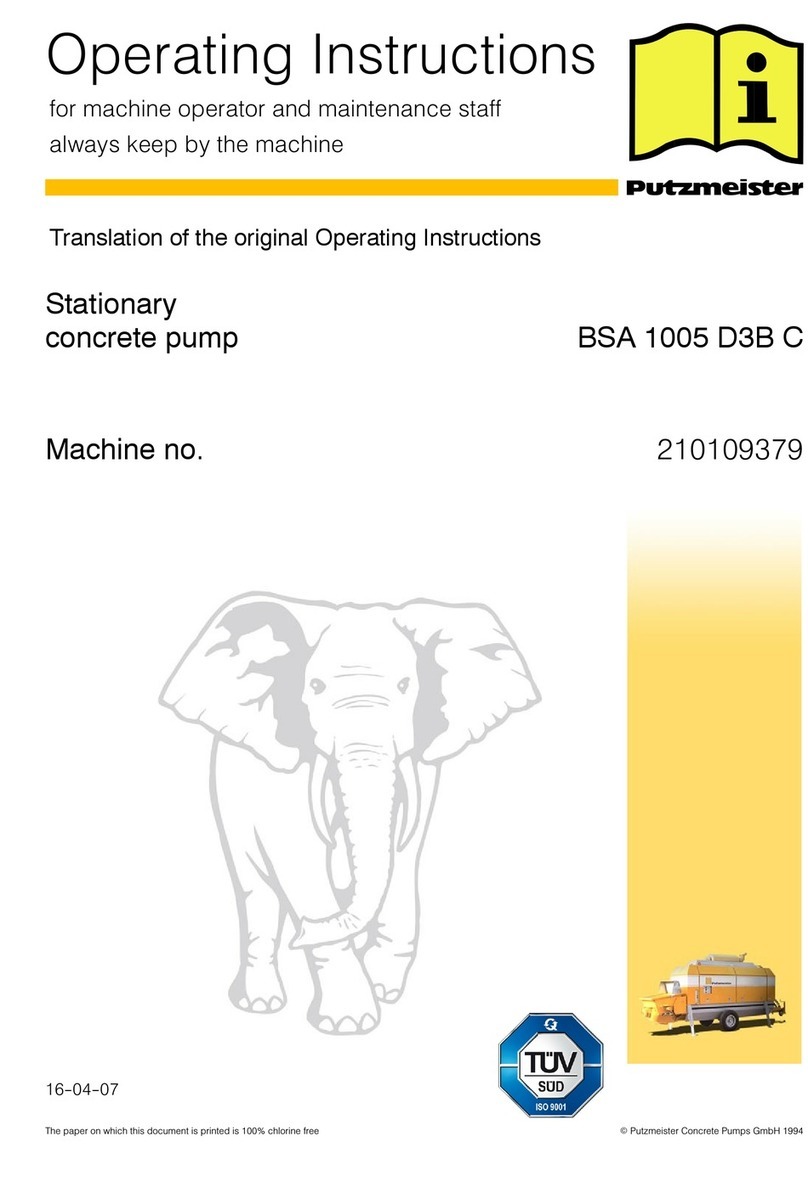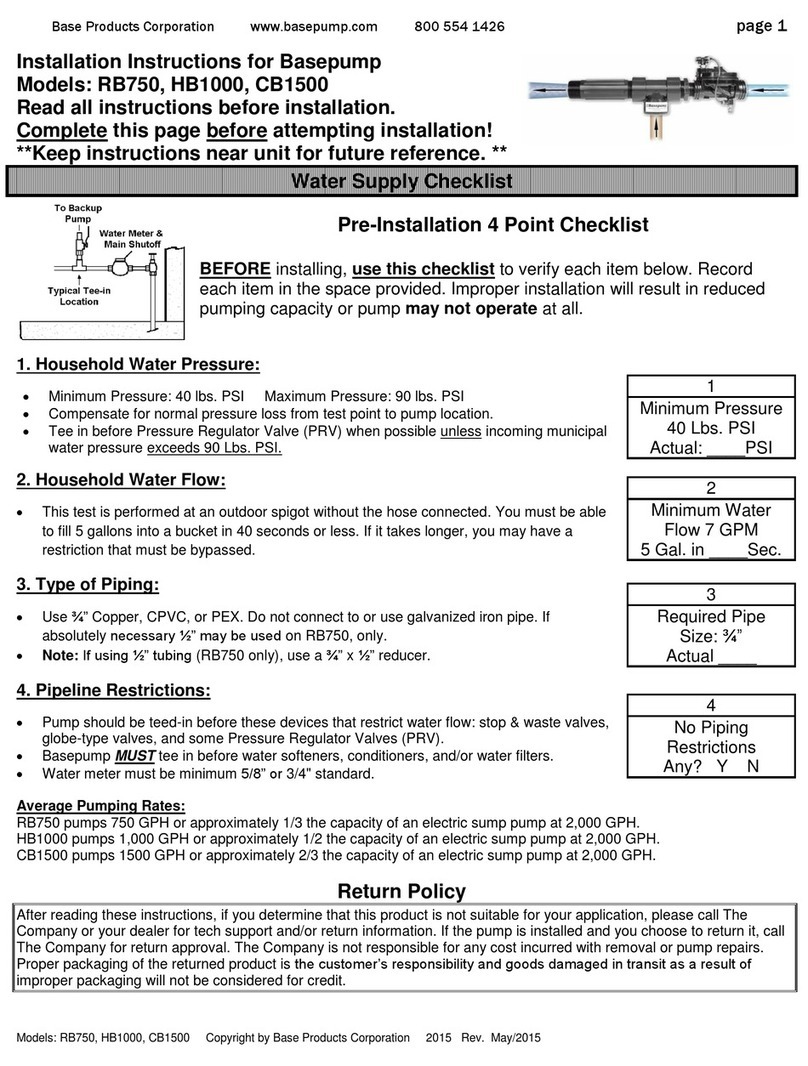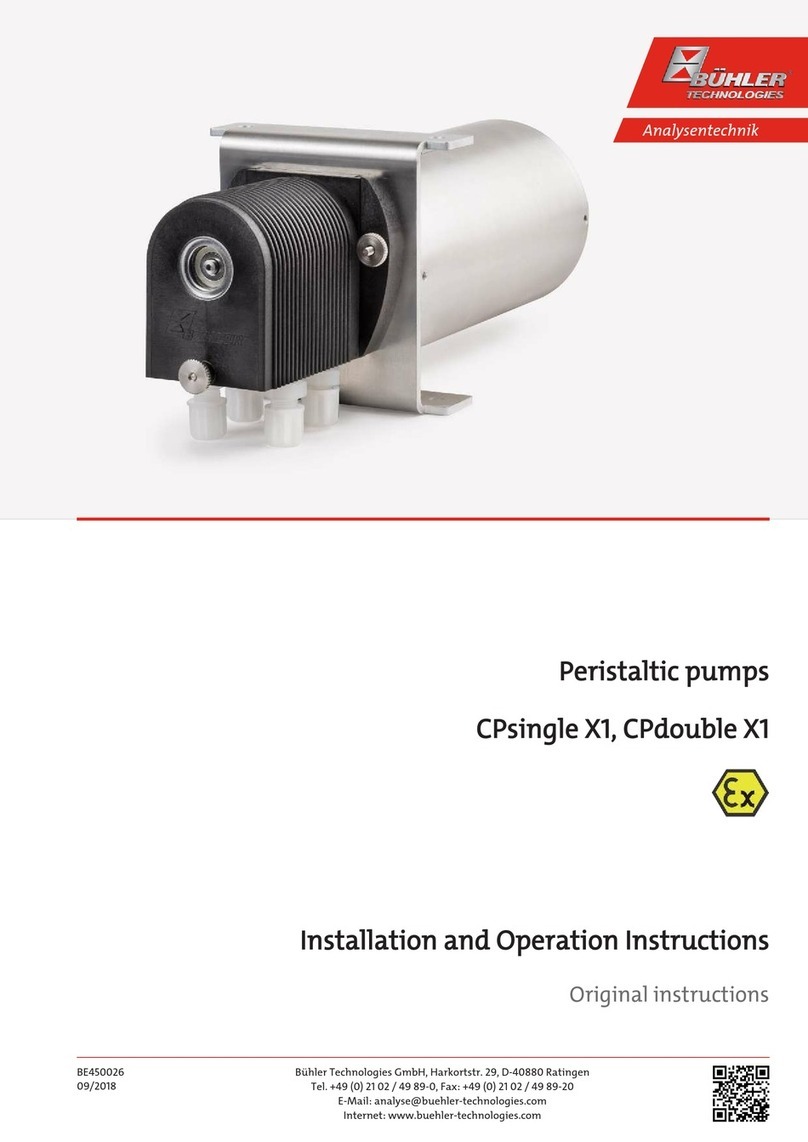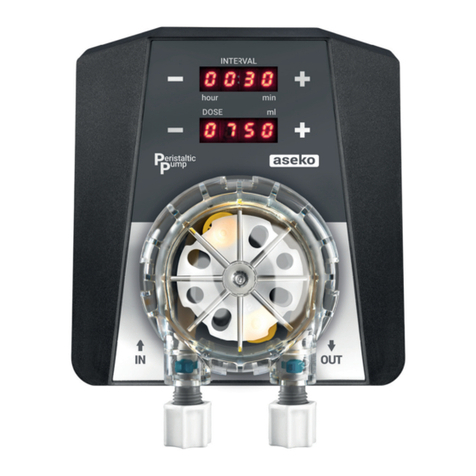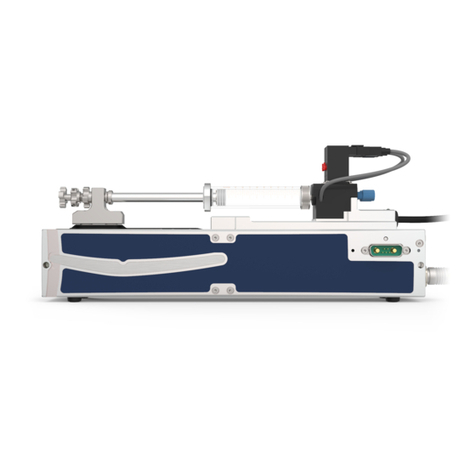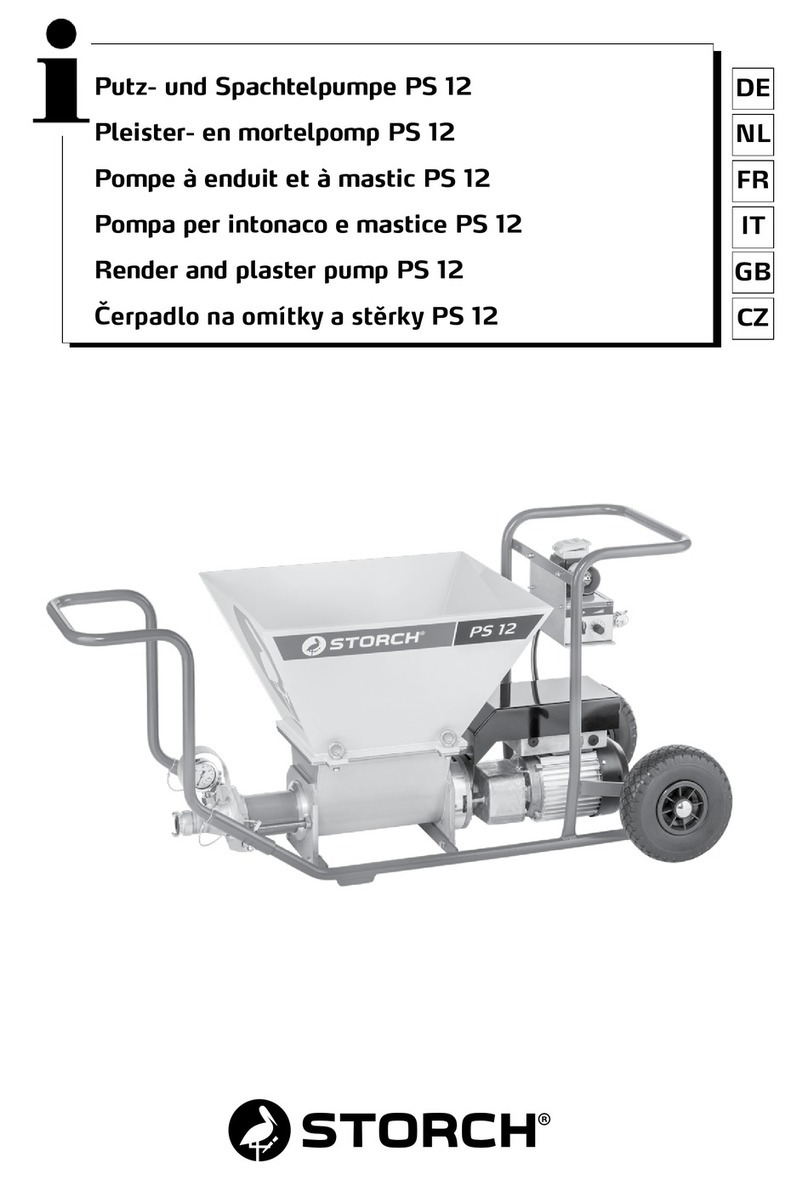
Page Number - 4 Form 422826
PILE DRIVER® III PUMP ASSEMBLY
MODELS 84900, 84901 and 84902
ATTACHING AIRMOTOR TO PUMPTUBE
1. Tightly attach tie rods to the airmotor (use short threaded
end of the tie rods).
2. Mount airmotor on top of the pumptube outlet and tightly
connect Coupling Nut (Item 2) to airmotor piston rod.
3. Hand tighten tie rods to the outlet with four nuts supplied
with airmotor.
4. Slowly cycle the pump several times, using ust enough
air pressure to operate the pump without stalling.
5. Stop the pump on an up stroke and tighten the four nuts
to securely fasten the airmotor to the pumptube.
Check continuity (a good static wire connection) with an
ohmmeter. Place one probe on one hose fitting and the
other probe on other hose fitting, continuity or proper
grounding through hose is good when a reading is
obtained on the ohmmeter.
PREVENT FIRES. When pumping, flushing or recirculat-
ing volatile solvents, the area must be adequately
ventilated.
Keep solvents away from heat, sparks and open flames.
Keep containers closed when not in use.
Use Lincoln replacement parts to assure compatible
pressure rating.
HEED ALL WARNINGS.
Be sure material hoses and other components are able
to withstand fluid pressures developed by this pump.
Do not operate pump continuously at speeds in excess
of 75 cycles per minute.
Disconnect air line from pump airmotor when system
sits idle for long periods of time.
SERVICING. Before servicing or cleaning pump, or
removing fluid hose or gun from a unit that has been
used, be sure to disconnect air lines and carefully bleed
pressure off of the system.
Keep hands away from pump inlet while airline is
connected. Do not operate pump unless it is firmly
mounted on to Pressure Primer or Standpipe and area
around pump inlet is clear of obstructions.
PREVEN S A IC SPARKING.
If static sparking occurs, fire or explosion could
result. Pump, dispensing valve, and containers must
be grounded when handling inflammable fluids, such
as petroleum products, paints, lacquers, etc. and
wherever discharge of static electricity is a hazard.
PUMP PRIMING
To start operating, the pump has to be primed with pumped
materials. The Pile Driver III pump is a double acting
(pumps material on up & down stroke) positive displace-
ment reciprocating pump and as such intakes material only
on the up stroke.
To prime pump, open output line (material valve) and slowly
open air supply valve until pump starts. Allow pump to cycle
very slowly until all air is pushed out of lines and material
fills out pump and lines. Close output line (material valve) -
pump should stall against pressure.
If pump fails to prime properly, open Bleeder Valve (Item 11)
slightly to expel trapped air and at the sign of material
coming out of the valve, close it tightly.
DO NO allow pump to operate when out of material.
NO E: Pump should be installed upright for operation.
Use Model 83727 Stand Pipe for bulk material dispensing.
Locate pump as close to tank as possible and use a
minimum of 3 in (76 mm) I.D. inlet hose or pipe.
FAILURE TO HEED THE FOLLOWING WARNINGS INCLUDING MISUSE, OVER PRESSURIZING, MODIFYING PARTS,
USING INCOMPATIBLE CHEMICALS AND FLUIDS, OR USING WORN OR DAMAGED PARTS, MAY RESULT IN
EQUIPMENT DAMAGE AND/OR SERIOUS PERSONAL INJURY, FIRE, EXPLOSION OR PROPERTY DAMAGE.
Do not exceed the stated maximum working pressure of the pump or of the lowest rated component in your system.
Do not alter or modify any part of this equipment.
Do not operate this equipment with combustible gas or fuel, gasoline, diesel fuel, kerosene, etc.
Do not attempt to repair or disassemble the quipment while the system is pressurized.
Make sure all fluid connections are securely tightened before using this equipment.
Always read and follow the fluid manufacturers recommendations regarding fluid compatibility, and the use of protec-
tive clothing and equipment.
Check all equipment regularly and repair or replace worn or damaged parts immediately.
Always check equipment for proper operation before each use, making sure safety devices are in place and operating
properly.








